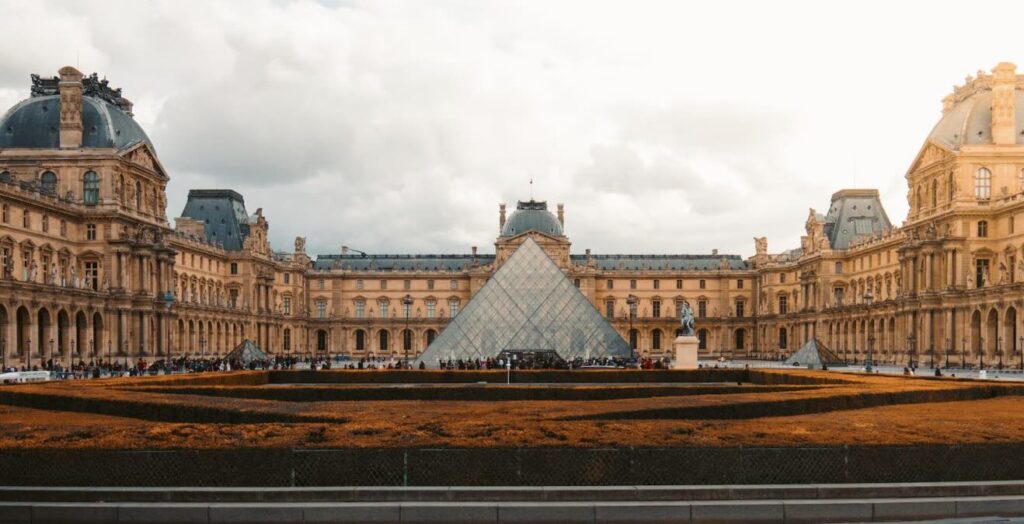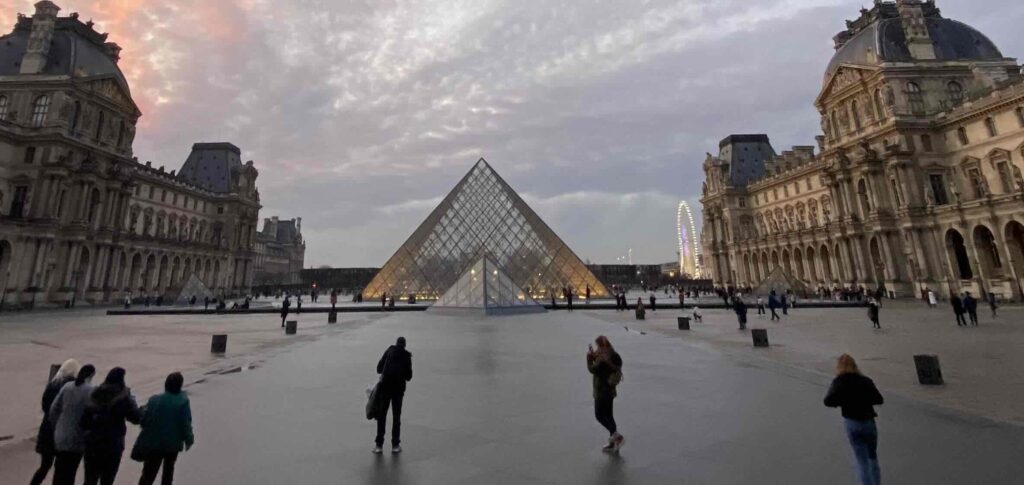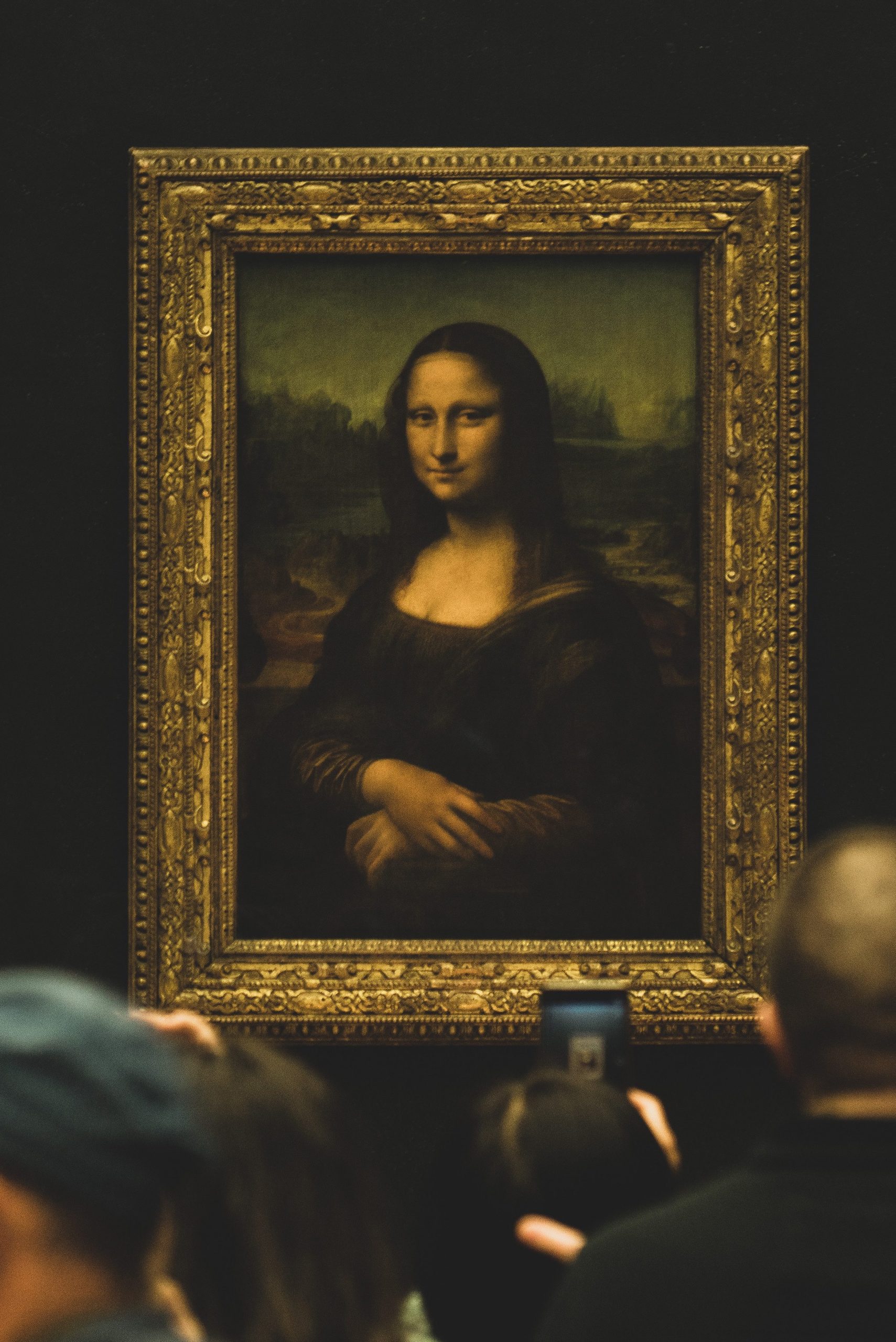The Louvre in Paris, France, is probably the most famous museum globally. Though they have millions of visitors annually, the name Louvre is a mystery to many.
The origins of the name Louvre are somewhat disputed. There are four main reasons for where historians think the name of the Louvre came from. None of these have been confirmed, and according to legends, the origin of the Louvre name has not been verified.
Table of Contents
The Name Louvre
The Louvre’s full name is Louvre Museum or French Musee du Louvre. The official name is the Great Louvre or the French Grand Louvre.
The origins of why the Louvre Museum is called the Louvre are somewhat disputed. There are several versions of why the Louvre is known as the Louvre.

Here are some of the reasons why people say the Louvre is named the Louvre:
Turris Lupara
In this first version, the Louvre is called the Turris Lupara because, according to the Grand Larousse encyclopedia, the Louvre is associated with wolf hunting. It comes from the Latin name lupus or lupara or, more precisely, “Turris Lupara.”
Wolf hunting was mainly for hunting grey wolves. They were hunted for their skins and so that the wolves did not kill the livestock. Before Paris was heavily populated, wolves would have roamed the countryside near the Louvre Museum.
Luvra
Another version that others have supposed is the name Luvra; it was called this from the 7th century when Bungundofara, also known as Saint Fare, gifted her Villa known as Luvra to a monetary in Paris.
People have not been able to verify that this land of the Luvra is where the present-day Louvre stands. Most people doubt this version of why the name Louvre comes from the word Luvra.
The Lauer
In the 9th century, they used the name, Lauer. This name has Saxon origins due to the German migrations to the area. The name Lauer is said to mean Watchtower.
During the 9th century, the Louvre would have had watchtowers as it was the seat of Paris for the government.
Name of the Fortress
Another version of the name Louvre goes back to the late 12th Century when King Philip decided to build a massive fortress around the capital of Paris to keep out the attacks from the west of the city.
In this version, it is said that the name Louvre was given as a name for the Fortress. Today, you can still see parts of this medieval Louvre in the crypt.
By 1546, the Fortress had lost all its ability to defend the city of Paris as Paris had grown and expanded rapidly. At this time, Francis I decided to convert the area into the French Kings’ primary residence.
The truth is that any of these four versions can be true. We know that the Louvre was a building built and rebuilt many times. When it was a Royal residence for the King, almost every monarch expanded the building somehow.

The Louvre Becomes A Museum
The Louvre was not always a museum. In fact, for hundreds of years, it was either a fortress or a royal palace.
Today, the area of the Louvre covers about 652,300 square feet or (60,600 square meters),
In 1682, Louis XIV decided to move the royal residence to Versailles; the Louvre then became home to many art academies and art exhibitions in the mid-eighteenth century.
In the mid-eighteenth century, there was a call for there to be a place for artists to show their work. In 1750, King Louis XV decided to display 96 pieces from the royal collection. A hall was open for public viewing.
Under Louis XVI, the reality of a museum became closer. Unfortunately, the French Revolution happened and never became a museum.
During the French Revolution in 1791, it was declared that the Louvre would be a place for people to view the sciences and arts. But also in 1792, Louis XVI was imprisoned, and the art collection became national property.
By 1793, the museum was under the control of the French Republic. It decided that the Louvre would be a museum, and they displayed 537 paintings and 184 objects of art. The public was allowed to enter the building three days per week; this was considered a significant accomplishment to give the public free access to the arts.
We owe it to Napoleon and his government for their insight to help to ensure that the Louvre would be a museum and not only have collections of art that were open for the public to view. The French Republic continued to collect works of art to display at the museum complex.

If you are in Paris, a trip to the Louvre is well worth it. The museum has Leonardo Da Vinci’s famous Mona Lisa painting, but it is also rich in art and artifacts.
I am very thankful for art museums. Art museums inspire me and help me to be a better artist. Anita Louise Art is dedicated to art education, great artists worldwide, and inspiring others to find and create their art. We look at all kinds of art made to uplift and inspire. #ArtToMakeYouSmile! #ArtToMakeYouHappy!
Anita Louise Art is dedicated to art education, great artists, and inspiring others to find and create their art. We love art that uplifts and inspires. #ArtToMakeYouSmile! #ArtToMakeYouHappy!
If you are interested to see any of my art, you can find out more by clicking here. If you are interested in what inspires me and my paintings, you can discover more by clicking here.
We have a free newsletter and would love you to be part of our community; you can subscribe to the newsletter by clicking here. If you have any questions, I would be happy to talk to you anytime. You can reach me, Anita, by clicking here.
Subscribe to our Anita Louise Art YouTube Channel with great videos and information by clicking here.
Frequently Asked Questions
Why is the Louvre called the Louvre?
The Louvre got its name from a medieval French word “l’ouvroir,” which means workshop. It was initially used to refer to the fortress’s workshops located on the site.
What is the significance of the term “l’ouvroir” in relation to the Louvre?
The term “l’ouvroir” reflects the original function of the Louvre site as a medieval fortress with workshops, serving practical purposes such as manufacturing and crafting.
Are there alternative theories about the origin of the Louvre’s name?
Yes, besides “l’ouvroir,” other theories suggest that the name could be derived from a word related to a wolf hunt, the name of the landowner, or even the location itself. However, none of these theories have been definitively proven.
How did the name “Louvre” evolve over time?
Over the centuries, the name underwent transformations, evolving from “l’ouvroir” to “Louvre.” The changes in language and pronunciation contributed to the development of the name as we know it today.
Is there any connection between the Louvre and a wolf hunt, as some theories suggest?
One theory proposes that the Louvre’s name is linked to a wolf hunt in the area. While this idea exists, there is no concrete evidence supporting it, and it remains speculative.
Was the Louvre always a museum, or did it have a different purpose initially?
The Louvre started as a fortress in the late 12th century and underwent various transformations over the years. It served as a royal palace before becoming the renowned museum we know today.
How accurate are the legends about the Louvre’s name?
Legends surrounding the Louvre’s name lack historical confirmation. The origin remains uncertain, and while legends contribute to the mystery, they shouldn’t be considered reliable historical sources.
Did the Louvre always house art, or was its focus different in the past?
Initially, the Louvre was not intended for art. It transitioned from a fortress to a royal residence and eventually became a public museum during the French Revolution, showcasing an extensive art collection.
Who played a significant role in transforming the Louvre into a museum?
Napoleon Bonaparte played a crucial role in transforming the Louvre into a public museum. He expanded its collection by acquiring art during his military campaigns and established the museum’s identity.
Has there been any recent research or discoveries regarding the origin of the Louvre’s name?
As of now, there haven’t been any recent breakthroughs or conclusive findings regarding the origin of the Louvre’s name. The mystery continues to be a subject of historical speculation and curiosity.
Related Questions
How Do Art Museums Choose What To Exhibit?
Art museums choose what they want to exhibit because of costs, budget restraints, and space restraints. They want to show art that the public wants to see and exhibitions the people are willing to pay an entrance fee to attend. A museum also exhibits those works of art that align with its mission and vision.
By clicking here, you can learn more by reading How Do Art Museums Choose What To Exhibit?
The Important Role Of Art Museums In The Art World
An art museum will help to collect and preserve works of art. They also interpret the art and help to educate us all about art. Many art museums will have programs that will allow you to experiment with different art types. The core role of an art museum is to inspire us about art.
You can discover more by reading The Important Role Of Art Museums In The Art World by clicking here.

